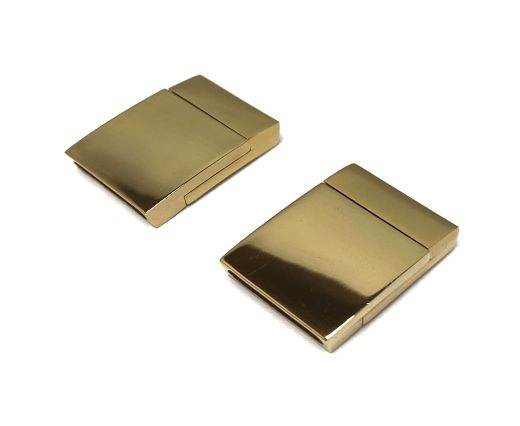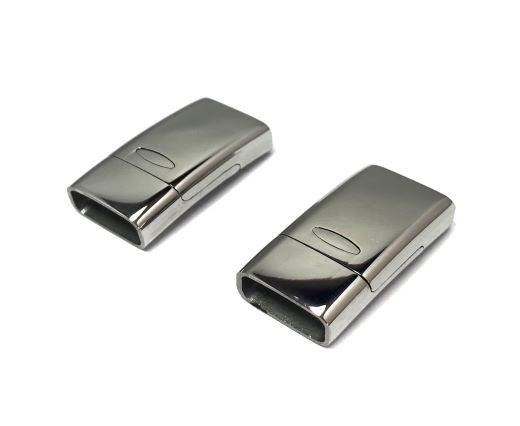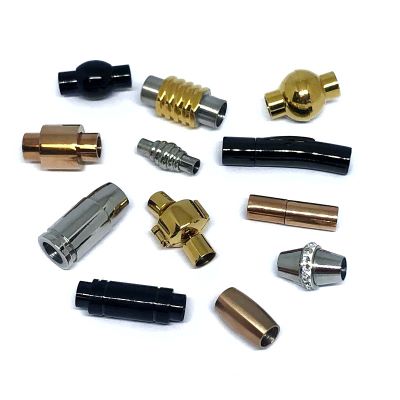How a New Clasp Type is Created
How a New Clasp Type is Created
At Sun Enterprises, we produce customized products based on our customers' designs, and in this blog, we want to dive deeper into the process. We engage in various kinds of customization including embossing on leather cords, which you can check og our website.
1. Introduction to the Need for New Clasp Types
In an era where customization and innovation are at the forefront, the need for new clasp types has never been greater. Whether it's for jewelry, bags, or industrial applications, a well-designed clasp can make all the difference in functionality and aesthetics. This guide walks you through the detailed process of creating a new clasp type, from initial concept to market launch.
2. Research and Design Phase: Understanding User Needs and Challenges
Before any design work begins, it's crucial to understand the specific needs that the new clasp must address. This involves:
- User Surveys and Interviews: Collecting feedback from potential users to identify pain points with existing clasp types.
- Market Analysis: Studying current trends and competitor products to spot opportunities for innovation.
- Technical Requirements: Consulting with engineers and designers to ensure the new clasp meets all functional specifications.
3. Material Selection: Key Factors and Considerations
Choosing the right material is vital for the clasp's durability and performance. Key considerations include:
- Strength and Durability: Materials must withstand regular use without degrading.
- Weight: Particularly important for wearable items like jewelry.
- Cost: Balancing quality with affordability.
- Aesthetics: Ensuring the material enhances the overall design.
Common materials include various metals (like stainless steel and titanium), plastics, and sometimes even composites.
4. Prototyping and Testing: Importance and Process
Prototyping turns design concepts into tangible models, allowing for real-world testing and refinement.
- 3D Printing: Quickly create prototypes to test form, fit, and function.
- User Testing: Gather feedback from a small group of end-users.
- Stress Testing: Ensure the clasp can handle expected loads and environmental conditions.
5. Refinement and Final Design Selection
Based on feedback and testing results, the design undergoes several iterations. This phase focuses on:
- Improving Durability: Making adjustments to enhance the clasp's strength.
- Enhancing Usability: Ensuring the clasp is easy to operate.
- Aesthetic Refinements: Fine-tuning the design for visual appeal.
Once refined, the final design is selected and approved for production.
6. Manufacturing Process Overview
With the design finalized, the focus shifts to manufacturing. This includes:
- Tooling and Molding: Creating molds and tools needed for mass production.
- Material Sourcing: Ensuring a stable supply of chosen materials.
- Assembly Line Setup: Configuring production lines for efficient and quality output.
7. Quality Control Measures
Quality control ensures each clasp meets the required standards through:
- Inspections: Regular checks during production.
- Testing: Functional and stress testing of random samples.
- Certification: Obtaining necessary certifications for safety and quality.
8. Post-Production Testing and Feedback
Post-production testing simulates real-world use to catch any potential issues before the product reaches the market.
- Beta Testing: Providing samples to select users for extended testing.
- Feedback Collection: Gathering insights to make final tweaks if necessary.
9. Launch and Market Introduction Plan
Launching a new clasp type requires a strategic plan:
- Marketing Campaign: Highlighting the clasp's unique features and benefits.
- Distributor Partnerships: Collaborating with retailers and distributors.
- Launch Events: Creating buzz through events and social media.
10. Conclusion and Future Development Possibilities
Creating a new clasp type is a meticulous process that involves research, design, testing, and marketing. By following these steps, you can ensure a successful product launch that meets user needs and stands out in the market. Looking ahead, continuous feedback and technological advancements will pave the way for future innovations in clasp design.
At Sun Enterprises, we offer customized wholesale jewelry components, as well as other products, and in this blog, we explored the intricacies involved in the process. Our customization services are diverse, encompassing techniques such as embossing on leather cords, which you can find detailed on our website.
















































